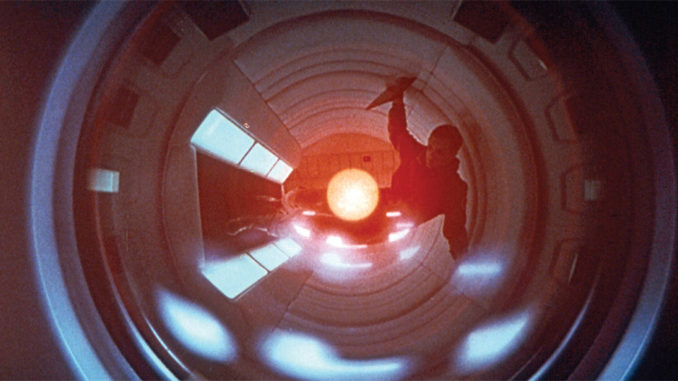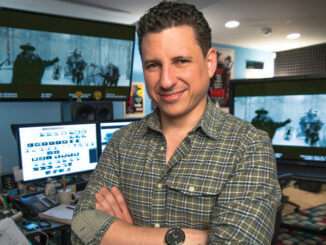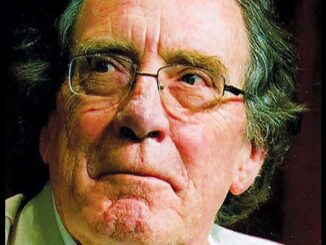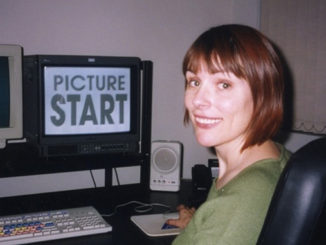
by Christopher Cooke, ACE
Growing up in Southern California’s San Gabriel Valley was like living thousands of miles away from Hollywood. I had no connection with the movie business growing up, but I loved the movies. My family and I would go all the time, even midweek if I could get my homework done early. Westerns, (The Good, The Bad and the Ugly, The Wild Bunch) cop dramas (Dirty Harry, Bullitt), comedy (Bananas, The Producers), musicals (A Hard Day’s Night, Woodstock)…I loved all of them.
My greatest film-going experience was seeing Stanley Kubrick’s 2001: A Space Odyssey at Hollywood’s Pantages Theatre in 1968. It was my first reserved seat screening of a movie. I went with my oldest sister and her date (who somehow tolerated my presence) to a weekday matinee. I was amazed to be shown our seats in the nearly empty theatre by a uniformed usher. It was the largest movie theatre I had ever seen.
The preview was of an MGM epic called Krakatoa: West of Java (the island is actually east of Java), complete with 18th century balloons flying over exploding volcanoes, grand adventure music and noisy eruptions. It was spectacular on the huge Cinerama screen format. (This was really a 2.2:1 aspect ratio not the true three-camera Cinerama of How The West Was Won.) The curtains closed and silence fell over the theatre.
But, suddenly, there was a sound…an overture of strange, atonal, modern classical music lasting three minutes in the dimly lit theatre. It set the perfect mood for what was to follow. The lights went out and the curtains opened. Richard Strauss’ Thus Sprach Zarathustra fanfare filled the theater as a line-up of the moon, Earth and sun appeared on the massive screen.
This was the first movie I couldn’t figure out. Every time I saw it I thought I had discovered its meaning…but then I would see something new.
This was unlike any movie I had ever seen. The movie unfolded with a slow, measured pace, revealing image after gorgeous image. The opening 20 minutes is about ape-men discovering a strange black monolith that seems to teach them how to kill. The second sequence is about the monolith being discovered on the moon with ominous international significance. Finally, almost an hour into the film, we meet the star, Keir Dullea, who travels with his crew and a cold, murderous computer named HAL 9000 to “Jupiter and Beyond the Infinite,” as the final section title card reads.
The final 20 minutes of the movie is a phantasmagorical journey. A rock ‘n’ roll lightshow of intensely colorful splitscreen images exploits the widescreen format fully. Dullea travels through time and space to a bizarre room––where he quickly ages and is reborn as a space child, who ends the film hovering over earth with an enigmatic but peaceful expression.
Two and a half hours later, I emerged onto Hollywood Boulevard transported by the film to a new level of fandom. I bought the booklet in the lobby (which I still have); it’s very cool in its Cinerama format. I bought the Arthur C. Clarke book. I played the soundtrack album of classical selections over and over (Kubrick discarded the original score and employed the temp tracks he had used in editing). I have seen the movie over 30 times in the theatre––and more on TV, videotape and DVD.
This was the first movie I couldn’t figure out. Every time I saw it I thought I had discovered its meaning…but then I would see something new. I know many people used to see the film on drugs, as it was the late ‘60s and the images were so wonderful. I tried that once and all I got was a headache.
Like many foreign films I would see in the future, Kubrick’s art film works below the surface––something most Hollywood films didn’t. I thought a lot about the images, the conflict between man and machine (the apes learned to make the first tools) and the implications of extraterrestrial interference in human history. I thought about man’s quest for truth, about how cinematic the storytelling was (the first word is spoken 22 minutes into the film and there is no dialogue for the last 20 minutes).
Kubrick used extreme methods to achieve the level of quality in his visual effects (all of which were done in camera over a year’s time). These effects took decades to reproduce as successfully.
Finally, what I took from this film is what I take from all great films––a love of what movies can accomplish as art, and a desire to go to the movies again and again.





